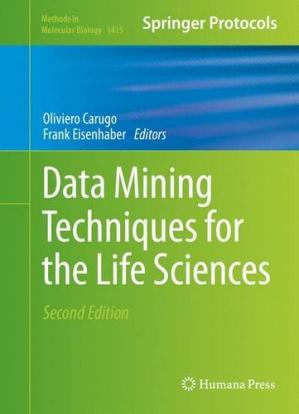
本卷详细介绍了几个重要的数据库和数据挖掘工具。生命科学的数据挖掘技术》第二版引导读者了解大分子三维结构档案、蛋白质-蛋白质相互作用数据库、蛋白质和突变体稳定性的热力学信息、"Kbdock "蛋白质领域结构数据库、PDB_REDO数据库、错误序列、替换矩阵。对齐RNA序列的工具,激酶家族/亚家族分类的有趣程序,预测蛋白质结晶性的新工具,代谢组学数据,药物-目标相互作用预测,以及基于蛋白质序列的功能预测的配方及其在最新版ANNOTATOR软件套件中的实施。本书采用非常成功的《分子生物学方法》系列格式,各章包括对各自主题的介绍、必要的材料和试剂清单、逐步进行的、易于复制的实验室方案,以及关于故障排除和避免已知陷阱的提示。
《生命科学的数据挖掘技术》第二版具有权威性和前沿性,旨在确保在这一重要领域的进一步研究中获得成功。
This volume details several important databases and data mining tools. Data Mining Techniques for the Life Sciences, Second Edition guides readers through archives of macromolecular three-dimensional structures, databases of protein-protein interactions, thermodynamics information on protein and mutant stability, “Kbdock” protein domain structure database, PDB_REDO databank, erroneous sequences, substitution matrices, tools to align RNA sequences, interesting procedures for kinase family/subfamily classifications, new tools to predict protein crystallizability, metabolomics data, drug-target interaction predictions, and a recipe for protein-sequence-based function prediction and its implementation in the latest version of the ANNOTATOR software suite. Written in the highly successful Methods in Molecular Biology series format, chapters include introductions to their respective topics, lists of the necessary materials and reagents, step-by-step, readily reproducible laboratory protocols, and tips on troubleshooting and avoiding known pitfalls.
Authoritative and cutting-edge, Data Mining Techniques for the Life Sciences, Second Edition aims to ensure successful results in the further study of this vital field.













